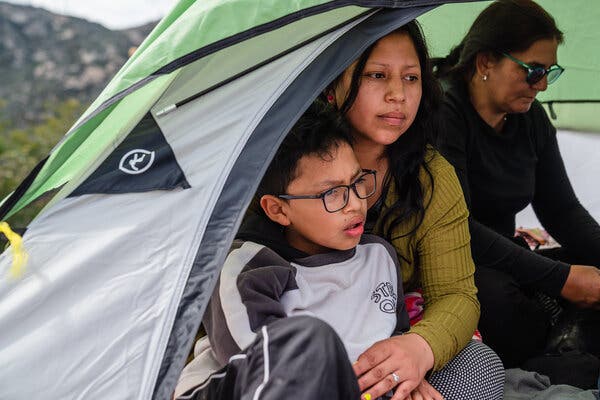It was 1:53 a.m., and Peter Fink was on a barren mountain plateau near Campo, Calif., passing out blankets to people from four continents who had arrived there under the cover of night.
This was a nocturnal ritual for the 22-year-old, dressed in a ball cap and a wool overshirt, whose perch — just over 300 yards up a rocky incline from the United States-Mexico border wall — had become a round-the-clock boarding space for people who had crossed unlawfully onto American soil.
With Mexico’s armed National Guard now stationed at the most popular crossing sites along southeastern San Diego County, migrant routes have shifted further into the remote wilderness, where people face more extreme terrains and temperatures with little to no infrastructure to keep them alive.
For migrants who were aiming to be apprehended by U.S. Border Patrol agents and begin applying to stay in the country, Mr. Fink’s makeshift camp, a dirt patch under the lattices of a high-voltage tower, had become a first stop, where modest rations of donated food, water and firewood helped migrants survive while they waited for agents to traverse the landscape and detain them before their health languished dangerously.
At this site and others along the border, migrants have waited for hours or sometimes days to be taken into custody, and a Federal District Court judge ruled last week that the Border Patrol must move “expeditiously” to get children into safe and sanitary shelters. But unlike outdoor waiting areas that had arisen in more populated areas, Mr. Fink’s site had no aid tents or medical volunteers, no dumpsters or port-a-potties — just a hole that he had dug as a communal toilet, and Mr. Fink himself.
